You can also be interested in these:
- How to bypass Spectrum cable box to other TVs at home
- Arris Surfboard SB8200 Docsis 3.1 cable modem review
- The Netgear R6700: The best DD-WRT router in 2021
- Does using an Ethernet cable affect the WiFi speed?
The main cause of signal variation or low speed of a Wi-Fi connection is the use of a broadcast channel that is either saturated or with interference. Some router models have a built-in spectrum analyzer that checks all the different channels and searches for the best channel for 5ghz that is less saturated at all times (fewer WiFi signals emitting through that channel) and configures each time a network on that specific channel.
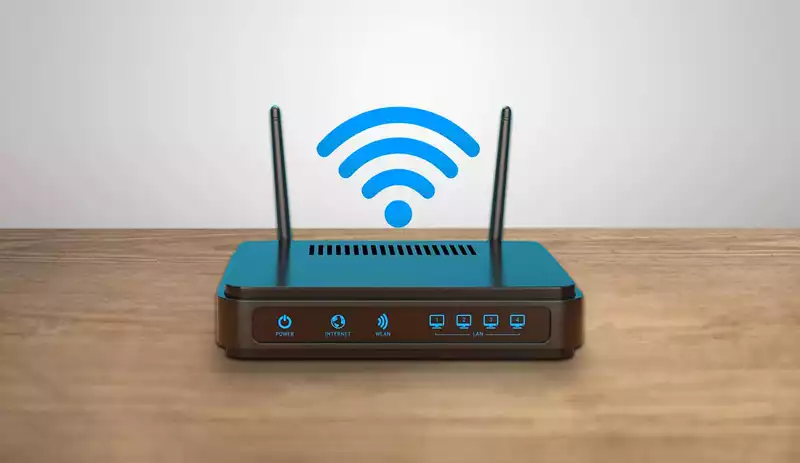
Although the main thing in terms of the quality of our wireless Wi-Fi is going to be the type of connection we receive from our service provider, many times the interferences with other nearby signals can make the user experience significantly worse, causing cuts, slowness in the connection and other problems that can be avoided by choosing a less saturated WiFi channel. Although our router offer the function of selecting the channel automatically, it is always advised to check if that is actually the best option.
The interference on the WiFi network
In the radio space there are several reasons why WiFi interference can be created. Regarding the use of the channel, the fact that several devices are using the same channel for communications or adjacent channels, causes an overlap in the frequencies and interferences to arise. In addition, in the radio-electric space itself we can find other waves that do not work under the same standard and that also compete to gain an edge, which can also generate interferences and problems in our connection.

Wi-Fi internet as we know it today works on the 2.4 and 5GHz bands, within the radio-electric space. This spectrum is regulated to guarantee interoperability between equipment, so that radio, mobile and other connections can also function correctly. Inside the WiFi, there are several channels of different amplitude. Still at the beginning of the year 2020, the majority of the internet routers still operated under the 2.4Ghz network.
There are various WiFi standards. The most widely used today are 802.11n and 802.11ac. The first uses two bands with channels of 20 MHz width. The amplitude is what determines the information transfer rate for a higher or lower theoretical maximum speed. This standard offers the possibility of operating with a channel width, or bandwidth, of 40 MHz joining two 20 MHz best channel for 5Ghz. But there are limitations, since 13 channels (20 MHz each) are used, the spectrum is widely saturated by the number of devices that operate on the 2.4 GHz band, generating interference between them and collapses in the exchange of data.
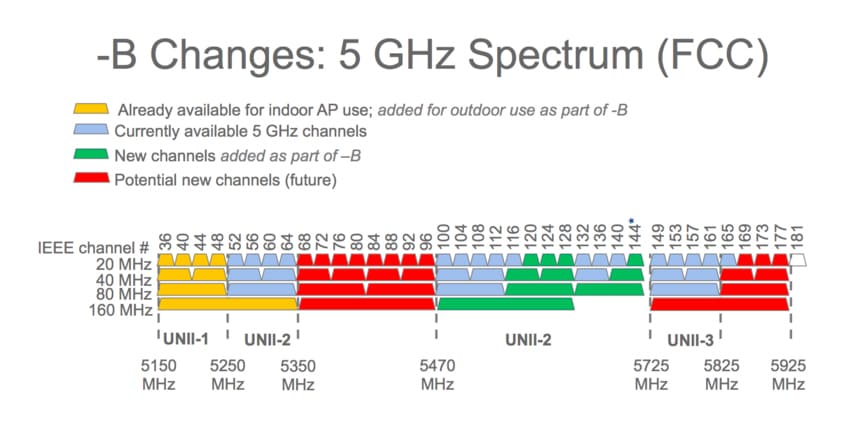
For the 2.4GHz band connection, each channel occupies 22MHz and that band range has to be divided into a total of 13 channels. This means that the channels will overlap at determined locations. That is caused mainly due to the lack of space throughout the band. Simply put, you can’t make such distribution without having segments overlapping with each-other.
As can be seen in the diagram, channel 1 overlaps with channels 2, 3, 4 and even 5 and so on. In this way, we can see that channels 1, 6 and 11 do not overlap each other, hence using these would be the best channel for 5Ghz would be the way to ensure that three networks do not have interferences between them.
Are the channels 1, 6 or 11 the best channel for 5Ghz?
If all WiFi devices were configured only on channels 1, 6 and 11 there would be no interference problems due to competition between channels. Therefore, the devices on channel 1 would not harm the performance of the networks that work on channel 6, and neither on the networks on channel 11. And thus, between all of them combined. There is no overlap between these channels.
The problem is that interference would continue to occur within the channel itself. If we distribute all the WiFi networks between only three channels, then we will have a higher density of devices per channel, therefore more competition. The exchange within a channel is limited, and thus this ‘density’ is what produces interferences, which on the user side translates into connection problems, slowness, bad signal and a long list of setbacks. That is why, although in theory channels 1, 6 and 11 of the WiFi are the best, in practice we must attend to the configuration of the rest of the networks within our reach. And according to this, configure the one that suits us best to avoid saturation.
Choosing the best channel for 5Ghz to avoid interference
There are certain router models that have an integrated spectrum analyzer that can help us in the task of choosing the best channel for 5Ghz according to our needs. Even so, perhaps it is best to resort to one of the many applications that allow us to obtain this information very easily.
Check the networks channels on Windows PC
To know the wireless networks around us and the channel that each of them is using, just open a command prompt or CMD window and execute the “netsh wlan show networks node=bssid” command. There we can find a lot of information, but what interests us in this case is to check all the WiFi networks that we have within our reach and the channel that each one is using to choose the channel of our network well and thus avoid the use of channels saturated or as much interference as possible.
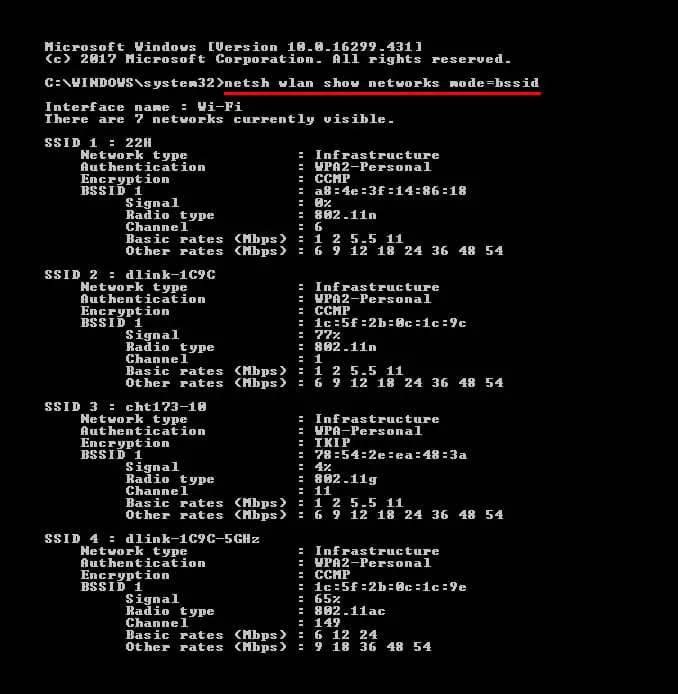
We can also use another method for this. Installing InSSIDer, one of the most popular, complete and free tools for this purpose. Of course, we will have to register before using it, although we don’t have to pay in order to use it.
Once installed, we open the tool on our computer and we will see that in addition to offering us a list with all the WiFi networks detected around us, we will also be able to see the channel that each of them uses, power and which channels are overlapping for each of them. All this information will help us decide which channel to choose for our network in order to avoid interference or more collapsed channels.
Check the networks channels on Android mobiles
From the mobile itself we can also see this information by using the app WiFi Analyzer, available for free on Google Play for Android devices. Simple functionality: just by opening the app on our mobile, we will see a graph displayed with all the networks within our reach.
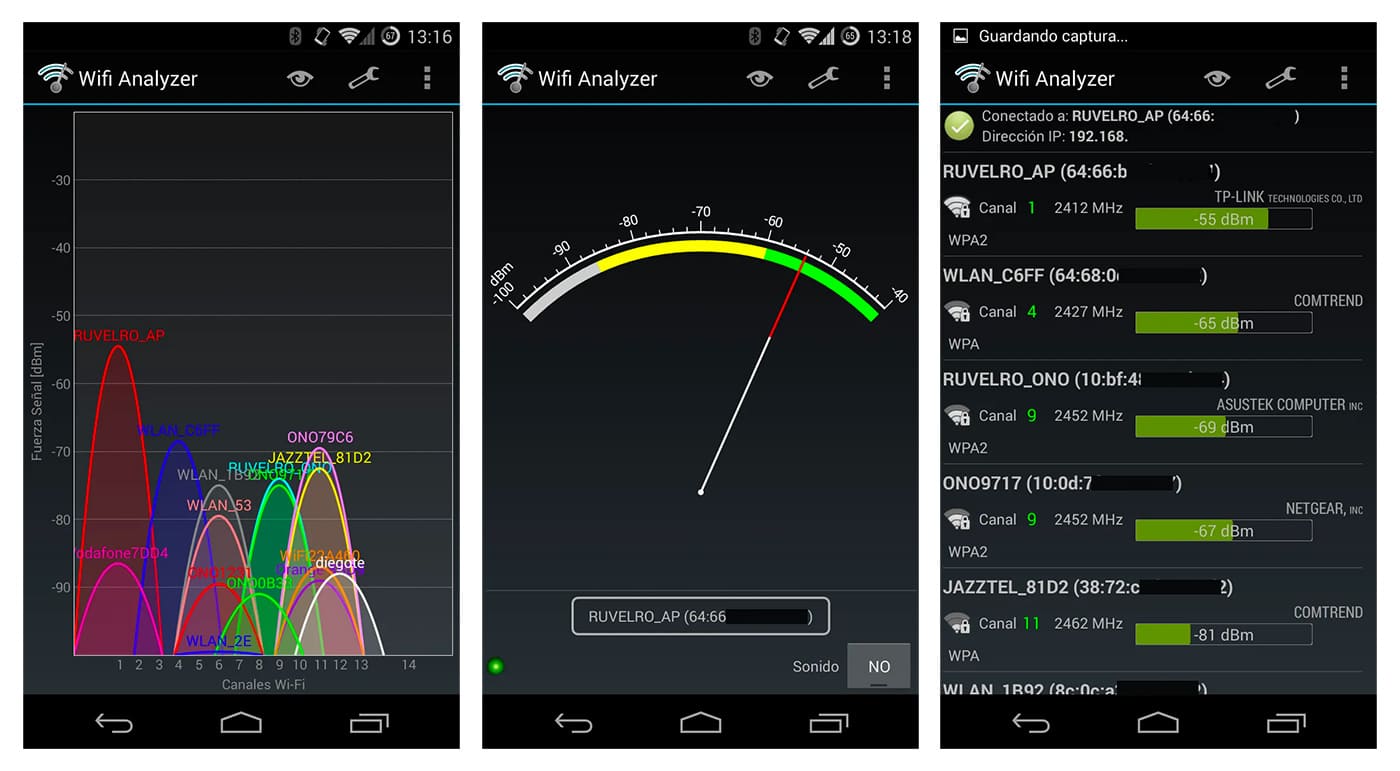
This information is useful, although it can be somewhat difficult to interpret. To obtain simpler information we must slide the screen from right to left and we will change screens. For example, we will see a signal meter that will help us locate the signals. One of the most important functions, a channel analyzer that will show us in star-rating format the best channel for 5Ghz our WiFi is capable to connect depending on how saturated the spectrum is in our location.
The next step is changing the Wi-Fi channel
In order to change the channel our network is using, the first thing we have to do is open a window in our browser and type in 192.168.1.1 in the address bar. This gives us access to the administration of our network router. This operation can be done from the internet browser of any device, assuming that we are connected to the network. If we do not know the access data of our router, there are default combinations that could work. We can try admin / admin, 1234/1234, admin / 1234 or any combination of the two. If we cannot access, then we must verify the brand and model of our router and look for, either physical or digital, a copy of the user manual. There you can find the access code.
Once logged in, we will have to locate the option where the channel used by our network is displayed. This option is located mostly, between the WiFi, Network, WLAN, or similar categories.
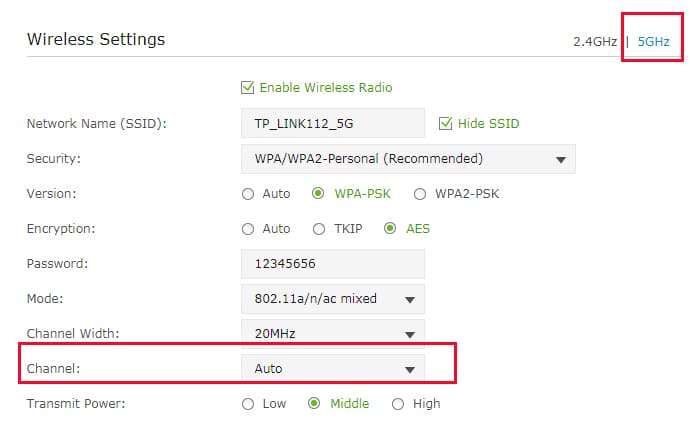
In the WiFi channel number drop-down it allows us to choose between Auto, Channel 1, Channel 6, Channel 11 or to establish a fixed one different from those. In this way, we can choose the channel we want and save the data. We may have to restart the router for them to take effect and start using the established channel.
In addition to offering higher speeds, the 5GHz network is much less prone to interference problems, as it has a large number of channels available, compared to the 2.4Ghz network.
Why is it sometimes better to switch to 2.4Ghz Wi-Fi?
For almost the first decade of WiFi, it has operated almost exclusively on the 2.4 GHz band. This has made the band very saturated, in addition to the fact that each channel has only 22 MHz of bandwidth, also overlapping with those closest to it.
In 2009, 5 GHz WiFi began to be used with the 802.11n standard, which we now know as WiFi 4. This new band, operating at a higher frequency, has a shorter range, but also allows WiFi to operate at a higher speed.
This band, in addition, has been thought better than 2.4 GHz, and each channel is separated so as not to generate interferences between them. There are fewer routers operating in those bands, and having less range, interference is greatly reduced in very densely populated areas. In the case of 2.4 GHz, there are many communications that operate there and generate even more interference, such as cordless phones, Bluetooth, wireless PC peripherals, console controls, microwaves, etcetera.
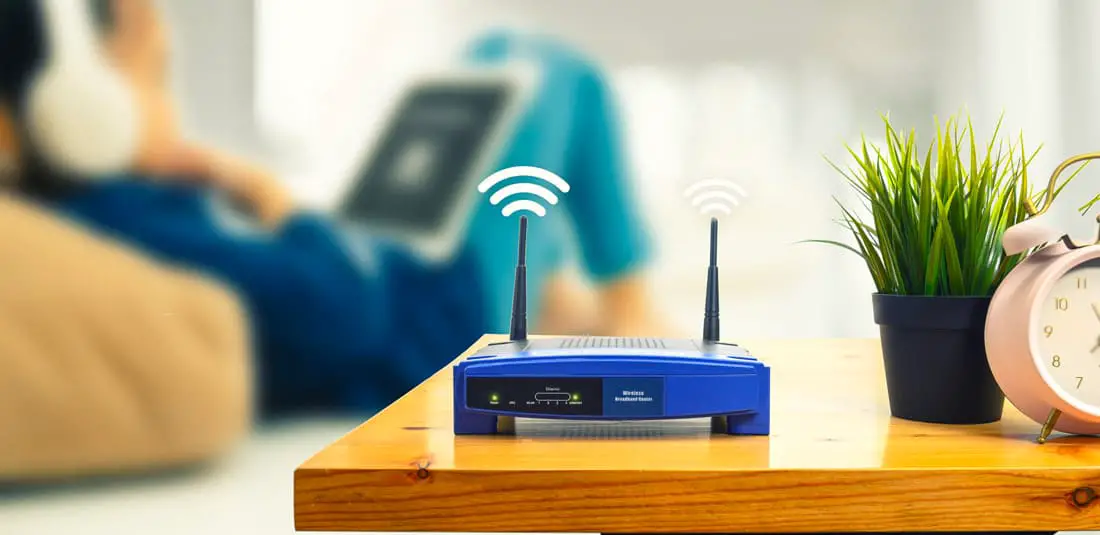
All these interferences do not affect the 5 GHz as much as it is very far from that band. You don’t necessarily have the need to hand-pick the best channel for 5Ghz because it has the advantage of being able to send data through several channels at the same time. Thanks to all this, a 5 GHz signal is more stable and reliable, but generally has a shorter range. Therefore, using the 2.4 GHz Wi-Fi has only one advantage: that it reaches a greater distance if the router is several tens of meters from our device, or if there are walls in between.
With this, we have the 2.4 GHz WiFi from the 2.412 MHz band (channel 1) to 2.472 MHz (channel 13), where there is a new channel every 5 Mhz. Each channel spans up to 22 MHz, where they overlap each other. The maximum real speed that reaches the 2.4GHz coverage is about 150 Mbps (300 Mbps theoretical), while in the best channel for 5GHz it reaches speeds that vary between 200 Mbps and 1 Gbps, being the theoretical maximums of 433 Mbps and 1,7 Gbps.
The channel 14
So if that channel exists, why can’t I select it on the router? Because it is prohibited in almost everywhere. In Japan it is the only country where it is allowed, and if you flash a firmware that allows you to select that you are in another country, you will be able to select that channel and use it, having less interference because almost nobody uses it; especially if you live in a building with many floors and WiFi networks.
The problem is that doing this is illegal. In Japan, the only country where it can be used commercially, it can only work under the 802.11b standard, with very limited speeds of up to 11 Mbps. Thus, using this channel nowadays makes no sense, and practically no router in the world allows it to be used. for that reason.
This band is known as the ISM band, for its acronym for Industrial, Scientific and Medical. Its use has to do with industry, medicine or the field of scientific research, and there is international agreement not to use them commercially. In addition, it is one of the most sensitive bands to generate interference with microwaves, and is also used by the military and various satellite communications. Therefore, using it can cause problems in air traffic, radars, satellite communications and surveillance equipment. The power of a WiFi network is very low, but for this reason it is necessary to avoid a generalized use of that band to eliminate any possible interference.
The benefit of the bandwidth in Wi-Fi channels
In the router configuration, for devices on the 802.11n standard, it works on both bands. We can choose a bandwidth of 20 MHz in both channels, 40 MHz in both channels, or 20 MHz in 2.4 GHz and 40 MHz in 5 GHz. The higher bandwidth allows a wider ‘lane’ for data exchange, then higher theoretical transfer speed. But this is where the risk of interference due to saturation of the radioelectric space in a given environment comes in. Therefore, a higher bandwidth is not always better, as it can cause instability on the wireless network and the connection with devices. The signal is degraded by interference between channels.
In 802.11ac equipment, still scarce, currently it is possible to take advantage of the 80 MHz bandwidth to achieve the maximum performance of the WiFi connection. However, in the future it is possible that, as is the case now with 2.4 GHz, we will have to ‘migrate’ to 40 or even 20 MHz to deal with network saturation. All this means that the ideal theoretical configuration goes through a greater bandwidth, but that the environment must be analyzed to know which is really the most suitable configuration, precisely because of the saturation of devices working on the spectrum.
Compared to the 802.11n standard, 802.11ac introduces wider channels. Although with the option of reaching 160 MHz. With the advent of Wave 2, Multi User Mimo has been introduced. In other words, a router can serve several traffic streams simultaneously to different users, in such a way that the transfer rate is optimized for several terminals instead of a single one.
With this, the risks of interference with wider bandwidth configurations are considerably reduced, and a higher transfer rate is achieved with greater network stability. But currently the 802.11n standard is the most widespread, despite the fact that devices such as smartphones have been marketed with the 802.11ac standard within the high-end range for several years.
The Wi-Fi 6
With the inevitable introduction of the 5G internet, the use of a new standard for its use is also imminent: Wi-Fi 6. The Wi-Fi Alliance has confirmed that WiFi 6 devices capable of using the 6GHz band will be using the name of Wi-Fi 6E. This is done to have devices with this capacity located before the early release of the 6 GHz band for the use of this wireless technology. According to this organism, this will happen very soon by regulators around the world. Wi-Fi 6E compatible devices will hit the market sooner rather than later after the approval of this new standard.
The agency notes that WiFi technology is now ready to operate in the 6GHz band as it becomes available worldwide. The Wi-Fi Alliance continues to work so that this frequency spectrum is soon available to users, while imposing protection measures for devices that already operate in this band.
For the Wi-Fi Alliance, 6 GHz is key for the immediate and medium-term future of the most widely used wireless technology. This gives WiFi more larger channels and the ability to interfere less with older standards such as Wi-Fi 4 or Wi-Fi 5. Specifically, users benefit from 14 additional 80 MHz channels and 7 additional 160 MHz channels. (1.2 GHz of additional spectrum).
This will be key for high-bandwidth applications that require faster data output, such as high-definition video streaming and virtual reality. Devices that support this new band will take advantage of the wider channels and additional capacity to deliver better network performance, supporting more users connected at the same time (even in very dense and congested spaces).
On a practical level, speed tests show transfer performance that is 30% faster with WiFi 6 than with WiFi 5, so the use of this new frequency band can only help improve these figures. In the meantime, we can take advantage of setting the best channel for 5Ghz so you can achieve the most out of your internet connection in terms of speed and reliability.
More stories like this
- How to bypass Spectrum cable box to other TVs at home
- Arris Surfboard SB8200 Docsis 3.1 cable modem review
- The Netgear R6700: The best DD-WRT router in 2021
- Does using an Ethernet cable affect the WiFi speed?
- Netgear C7800 Nighthawk X4S internet router review
- Netgear N300 vs N600 WIFI routers